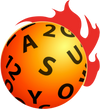"Eyes" on Balance: Preventing Falls in Parkinson's

Parkinson’s disease often brings challenges with balance, mobility, and a higher risk of falls. Recent research highlights that eye movement exercises—especially quick, side-to-side movements—can play a crucial role in improving stability and reducing fall risk for people with Parkinson’s. Even though PD can make eye coordination more difficult, targeted eye exercises can still provide significant benefits.
1. Improved Postural Stability
Research shows that side-to-side (horizontal) eye movements can reduce body sway and improve postural stability in people with Parkinson’s. Studies have found that practicing these eye movements leads to less swaying while standing, which is important because excessive sway is a major contributor to falls in PD. This benefit is seen even in those who struggle with precise eye movement control.
2. Enhanced Balance and Mobility
Adding eye movement training to balance and mobility routines has been shown to improve walking and balance performance. For example, combining activity-based physiotherapy with eye movement practice helps patients focus better on their walking path and obstacles, leading to more stable and confident movement. Improved visual attention helps people with Parkinson’s navigate their environment more safely, reducing the risk of tripping or stumbling.
3. Reduced Freezing of Gait (FOG) and Fall Risk
Freezing of gait—a sudden inability to move the feet forward despite the intention to walk—is a common and dangerous symptom in PD. Eye movement training has been linked to fewer FOG episodes and better visual attention patterns. By teaching patients to shift their gaze to relevant targets instead of fixating on the ground, these exercises help break the cycle of freezing and support smoother, more continuous movement.
4. Adaptation and Compensation for Motor Deficits
While some eye movement functions are impaired in Parkinson’s, others—especially those involving tracking moving objects—are often preserved. This means that eye movement exercises can tap into existing strengths, helping patients compensate for other motor deficits. Practicing these movements may also engage alternative neural pathways, supporting overall motor function and adaptation.
5. The BrainSpeed Ball®: Making Eye Exercises Fun and Effective
A practical and engaging way to integrate eye movement exercises into daily life is with the BrainSpeed Ball®. This tool gamifies eye exercises by having users track a moving ball, identify letters or numbers, and say them aloud, activating the brain’s “sense-decide-act” process. Just five minutes a day with the BrainSpeed Ball® can help improve balance, coordination, and reaction time, making it an enjoyable and accessible method for people with Parkinson’s to exercise their eyes and support fall prevention. The BrainSpeed Ball® is designed to engage the visual and vestibular sensory systems, both of which are critical for balance. By practicing with the BrainSpeed Ball®, people with Parkinson’s can improve posture, stability, and confidence—helping them stay active and safe while doing the things they love.
Incorporating simple eye movement exercises, especially using tools like the BrainSpeed Ball®, offers a research-supported, accessible, and fun way for people with Parkinson’s to boost their balance and reduce the risk of falls. As always, it’s important to consult with a healthcare provider or physical therapist before starting any new exercise program.
Learn about our Parkinson's Specific Training Program Here:
Sources:
Goulart, F., & Viana, A. R. (2016). Saccadic eye movements reduce postural sway in people with Parkinson’s disease: A pilot study. Clinical Interventions in Aging, 11, 439–445. https://doi.org/10.2147/CIA.S100030
King, L. A., Mancini, M., Priest, K. C., Salarian, A., Rodrigues-de-Paula, F., & Horak, F. B. (2012). Do clinical scales of balance reflect turning abnormalities in people with Parkinson’s disease? Journal of Neurologic Physical Therapy, 36(1), 25–31. https://doi.org/10.1097/NPT.0b013e31824620b1

